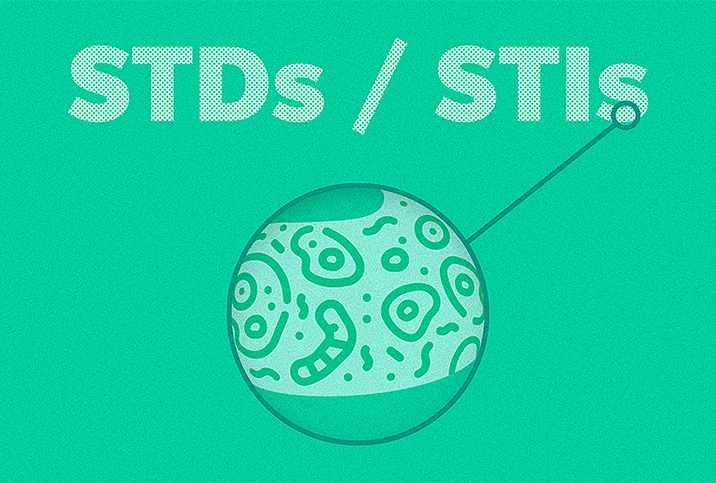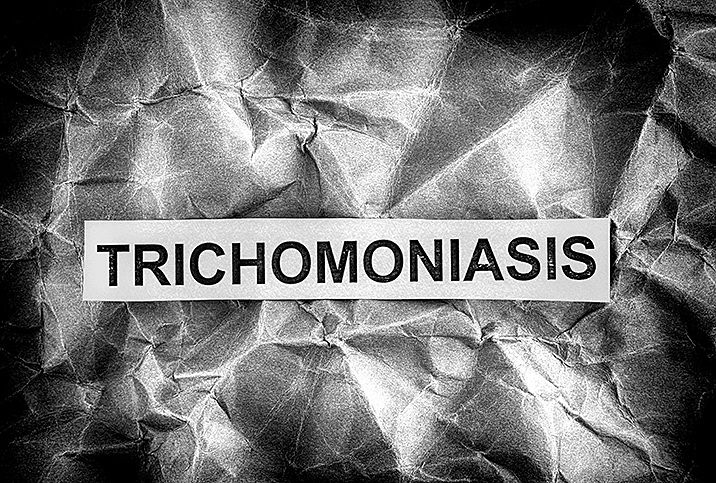Understanding STD/STI Testing

Are you confused by the difference between an STI and an STD? You're not alone.
An STI is a sexually transmitted infection. More than 1 million STIs are passed along every day worldwide, according to the World Health Organization (WHO). The Centers for Disease Control and Prevention (CDC) estimates that adolescents and young adults account for half of all new sexually transmitted infections.
A sexually transmitted infection often leads to a sexually transmitted disease (STD). Some organizations use these terms interchangeably, but they are different. Simply put, an STI is an infection that has not yet developed into a disease. As the term indicates, STIs are transmitted during sexual activity and can include infections from parasites, bacteria or viruses.
When STIs are not treated, and bacteria, viruses or parasites begin exhibiting symptoms, they become sexually transmitted diseases and may cause permanent damage to the body. Not all STIs develop into STDs, however. For example, human papillomavirus (HPV), a virus that can lead to an STI, can sometimes resolve on its own.
Signs you might have an STD
Sexually transmitted infections and sexually transmitted diseases are similar and exist on the same spectrum. For the purposes of understanding the symptoms, diagnosis and treatment, we can talk about them together.
HPV, according to the CDC, is the most common sexually transmitted infection in the United States. Four of the other most common STDs/STIs worldwide, according to WHO, are chlamydia, gonorrhea, syphilis and trichomoniasis.
The type of organism by which a person is infected determines the signs and symptoms of the resultant STD. In some instances, there will be no symptoms at all. Men with an STD may experience discharge from the penis, or sores, bumps or blisters on the penis, mouth or anus. Sexually transmitted diseases can also trigger pain in the pelvic area, burning or itching in the penis, or burning and pain with urination or bowel movements.
Men and women infected with trichomoniasis, or "trich," do not usually have symptoms. This condition, caused by a parasite, is easily treated and cured. But unless you're tested, you likely won't know you have it. The CDC estimates there were more than 2 million infections in 2018, but only 30 percent of people typically experience symptoms.
Common tests for STDs
The long-term consequences of several STDs are serious, so if you are sexually active, it is important to have routine physical examinations and blood tests to detect any problems, including infection. Some STDs can be diagnosed during a physical examination. HPV, for example, leads to genital warts that are detectable during an exam. Your doctor may take a swab of fluid from your penis, vagina or anus to evaluate under a microscope. Taking a culture of the fluid can identify bacterial or fungal infections. Your doctor may order blood tests to diagnose hepatitis A, B or C, syphilis, herpes or HIV, and, less commonly, gonorrhea or chlamydia.
The CDC proposes men and women who are sexually active follow these testing recommendations:
- Get tested at least once for HIV if you are sexually active.
- Get tested once each year for chlamydia and gonorrhea if you are a woman younger than 25 and sexually active, or if you are a woman 25 or older with risk factors such as multiple partners or a partner with an STD.
- Get tested for HIV, syphilis and hepatitis B early in pregnancy; get tested for chlamydia and gonorrhea if you are an at-risk pregnant woman.
- Get tested every year for chlamydia, gonorrhea and syphilis if you are a sexually active man who has sexual contact with other men, and more frequently if you have multiple partners.
- Get tested every year or more often for HIV if you are a sexually active man who has sexual contact with other men, has had unsafe sex or shares needles.
Treatment for STDs
Treatment for sexually transmitted diseases is dependent upon the infection that caused it. What follows are some of the more commonly diagnosed STDs and their treatments.
Human papillomavirus (HPV)
This group of viruses—more than 100 different types—is extremely common: 43 million people were infected with HPV in 2018, according to the CDC. In many cases, HPV resolves spontaneously within two years, but when it doesn't go away, it can cause genital warts or cancer; it is responsible for nearly all cervical cancer cases.
Genital warts may be the only clear sign of an infection caused by HPV. To date, there is no blood test that reveals your HPV status. There are HPV tests used for cervical cancer screening, so talk to your doctor about the current guidelines and recommendations for testing.
Herpes
There are eight types of herpes simplex virus (HSV), with type 1 and type 2 being the only sexually transmitted ones. The remaining six cause other types of infections, such as chickenpox and shingles, infectious mononucleosis, cytomegalovirus and Kaposi sarcoma. For the most part, a physical exam and a viral culture reveal HSV-1 and HSV-2.
Herpes infections occur in the mouth, vagina, anus and at the tip of the penis. The virus causes a blister or sore at the point of infection, and sometimes you may have a fever with the first outbreak. The sores gradually resolve, but the virus stays in your body. After the first infection or outbreak, the virus becomes inactive but may periodically reactivate and trigger symptoms. No treatment can permanently eliminate the virus, but antiviral drugs can help with symptoms.
During an outbreak, you can ease your pain by keeping the area dry, wearing loose clothing and taking a warm bath. Some people find relief with ibuprofen or acetaminophen.
Chlamydia
Chlamydia is a common sexually transmitted disease that's caused by the bacteria chlamydia trachomatis. The CDC estimates there were 4 million chlamydia infections in 2018 in the U.S., though many cases likely go unreported because many people do not have symptoms, which is why chlamydia is often known as the "silent infection."
Nearly two-thirds of new infections occur in sexually active teens and young adults ages 15 to 24, but any sexually active person is at risk for infection, making annual screenings essential. Chlamydia is transmissible through vaginal, oral or anal sex. Men who do have symptoms complain of urethritis, an inflammation of the urethra that causes a watery discharge at the end of the penis.
Chlamydial infections are easily cured with antibiotics, but can lead to serious health problems if not treated.
Gonorrhea
Gonorrhea is also common in young people from ages 15 to 24, both males and females. Neisseria gonorrhoeae is the bacterium and it can infect the mouth, rectum, penis or vagina.
Men may not experience symptoms of gonorrhea, but when they do, they include a burning sensation while urinating and a white, yellow or green discharge. Women may have a painful or burning sensation while urinating, vaginal bleeding between periods or increased vaginal discharge.
Gonorrhea can be treated with antibiotics; over-the-counter drugs don't work. Left untreated, gonorrhea can cause pelvic inflammatory disease (PID) in women, and a painful condition called epididymitis, or inflammation of the epididymis, in men. The epididymis is a tube inside the scrotum that carries sperm from the testicles. In rare cases, gonorrhea can lead to sterility.
It's important to note that gonorrhea cases have been increasing sharply, due in part to the prevalence of antibiotic-resistant gonorrhea (ARG). Strains of gonorrhea have been found that are resistant to almost every drug used for its treatment; only one class, cephalosporins, remains effective and is recommended. These strains are particularly prevalent among men who have sexual contact with men. This makes it especially important to get tested and have a thorough discussion with your doctor about treatment.
Syphilis
Syphilis is a sexually transmitted disease caused by the Treponema pallidum bacterium. It's transmitted by direct contact with an open sore called a chancre. Sores can happen on the genitals, rectum, lips and mouth. When left untreated, syphilis can cause long-term health complications and can even be life-threatening.
Many of the symptoms of syphilis look similar to other conditions, earning it the title "the great imitator." The disease has three stages, and the symptoms are different in each stage. Primary syphilis happens during the initial 12 weeks after exposure. The sores occur inside the vagina or rectum and can last up to five weeks. Although the sores disappear, syphilis remains in the bloodstream.
Secondary syphilis occurs within six months after the first sore. Men and women may experience a rash, flu-like symptoms, and white-gray patches around the mouth and lips or wart-like lesions around the genitals. During the latent stage, syphilis remains in the blood and can affect the heart, brain and other organs. Prescription medication successfully treats syphilis at any stage, but the longer treatment is delayed, the more complicated it and the condition can become, so it's ideal to seek help early.
The importance of testing for STDs
Several sexually transmitted infections and diseases do not have symptoms, but the diseases can cause permanent damage to the body even without symptoms. It is crucial to maintain a screening schedule with your healthcare provider if you are sexually active.
Talk openly with your doctor about your sexual history or consult a clinic for free or low-cost testing of STIs and STDs. The importance of annual screening and proper care for symptoms cannot be overstated.
It's not always easy for people to seek help for something as personal and sensitive as STIs. And if you don't have a regular physician, it's even more difficult to take that first step. Video visits—even if in-person follow-up might be required—are a viable option for most people. Fortunately, more physicians have added them as a service. Giddy telehealth makes it easy to get connected to a qualified healthcare professional who can help with a variety of conditions, including diagnosing and managing STIs.


















